Unless you’ve been living under a rock, you’ve probably noticed that there is controversy surrounding the value of livestock agriculture and its end-products: milk, eggs and meat.
Detractors argue that livestock agriculture is inefficient – livestock eat grain that could be fed to humans. The condition that the animals live in is inhumane, there is massive pollution and the end-products make us sick. There is a lot of truth in all of those statements as pertains to modern, factory farming.
I see a lot less discussion about why livestock farming fitted into historical eating patterns. If it is so wasteful to produce meat, then why was it consistently done on the homestead? Certainly it would be less work not to? Why was pork the world’s most consumed meat? What made the dairy cow the center of the homestead? Why did people only eat chicken on Sundays?
Furthermore, rarely do I hear this debate argued on economic grounds. This is critical. The large Midwestern US grain operations are funded by ag banks. Those banks have a very narrow focus in what they’ll fund and the farmers have to keep going until the debts are paid. American vegans argue that if everyone switched to a plant based diet, we could plant less acreage. The reality is that we would export more. We already export half of our soybean crop, much of it to China. If we did plant less acreage, what would happen to the jobs, people, communities?
Livestock agriculture has the ability to do great harm to the planet and the environment, but it also has the potential to give people employment that is soul-fulfilling, to rebuild communities, to build a new food culture. This all depends on our values as a society. Do we fix the problems that were foisted upon us by the Green Revolution, ushering a new, more modern agrarian era? Or should we all be investing in lab grown meat?
The problem with the vegan argument is not about the theory. Yes, it takes less acreage to feed people grain and potatoes. That’s just a hard fact. The problem is strategy. Vegan agriculture has no buying power. We can’t fix the world in a day, but we can start in our backyard, and by this I mean American farmland. If we can develop integrated systems that make more money than monocropping, then we can begin to convert formerly monocropped land to sustainable, diversified operations that support more people on the land. If we have regional meat and dairy processing and marketing and the latest technology on the farm, we can compete for acreage with China. If you want to effect agricultural change, you have to control the acreage, period. Vegan agriculture means less American monocrops will be used in America and more will go to China.
The new agrarian era will be informed by the old one but it will look very different. I’m talking about moving cattle with GPS collars and milking them with robots. I’m talking about integrating electronic pig feeders and gates to maximize the value of hogged down crops such as jerusalem artichokes and sorghum-sudangrass. Did you know you can profitably finished pigs without soybeans or any other high protein supplement?
We need profitable, replicable models that provide a humane existence for both the livestock and the farmer at a profit that allows us to compete for land with the monocroppers. We might need our own banks. The good news is this: they only make ten bucks an acre. We can win.
This is the first article in my series on livestock agriculture.
Speaking of China, we might as well start there. China was able to build by far the world’s largest sustainable pork herd before they began to destroy it for cheaper meat around the year 2000. The staples of the Chinese diet are white rice and pork. Why?
Video Supplement
I’ve posted a supplemental video to go along with this article over at the Fire In A Bottle YouTube channel. Check it out! Make sure to subscribe, there will be a lot of good content going forward.
Pork in China
The Chinese symbol for “family” or “home” is a house with a pig inside. This tells you the primalcy of pigs to the culture of China.
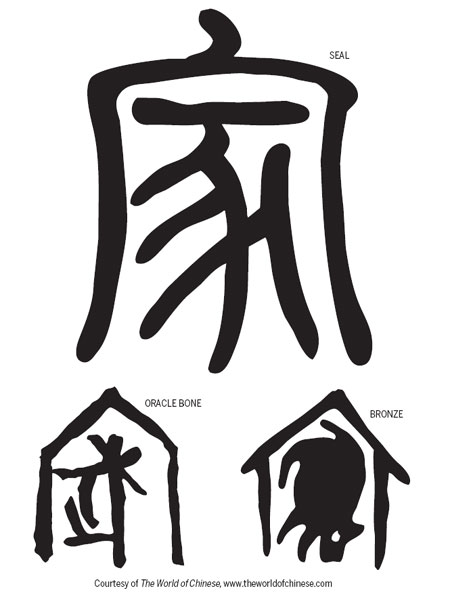
In the Chinese language, meat is synonymous with pork. Meat fried rice is assumed to be pork. If it’s chicken fried rice, you have to specify. To this day, the predominant meat consumed in China is, by far, pork. This has also been historically true in Europe and in the Eastern US before the rise of large Western beef ranches. Pork is meat.
| Calories per capita per day | 1971 | 2017 |
| Pork in China | 78 | 378 |
| Pork in Western Europe | 250 | 212 |
| Beef | ||
| Beef in China | 1 | 31 |
| Beef in Western Europe | 81 | 57 |
| Poultry | ||
| Poultry in China | 6 | 69 |
| Poultry in Western Europe | 35 | 70 |
The reasons for this are both ecological and for mitochondrial health. The average farm size in China is about 1 acre. Pigs can be kept in small spaces. A single cow requires 2-3 acres of pasture, probably more if it’s a high producing dairy cow. There’s simply no room for that in China. But China also loves duck. Why don’t they eat more poultry?
Pigs Recycle Thiamine
Pigs are not just machines that convert grain to meat. They are great recyclers of farm waste. On the majority of Chinese farms, the staple crop is rice. Rice gives four main products: white rice, rice bran, cracked rice kernels and rice straw. The white rice is, of course, for human consumption.
The rice straw is composted to fertilize the next years crop, but straw alone is too low in nitrogen to be properly composted. Conversely, the pigs need bedding. The pigs need the rice straw and the rice straw needs pig manure. The next years rice crop needs the composted straw and manure.
Essentially all rice eaten in China is white rice. The bran is separated from the kernels, resulting in polished rice and rice bran. Cultures who rely too heavily on white rice sometimes get a disease called beriberi : thiamine deficiency. Thiamine is a crucial vitamin for our metabolism. It is a necessary co-factor of pyruvate dehydrogenase, alpha ketoglutarate dehydrogenase and branched chain alpha-ketoacid dehydrogenase. All three of these enzymes are crucial to our metabolism and they all produce ROS1. Production and elimination of ROS is a thermogenic (heat producing) cycle that regenerates NAD+ : the key electron carrier that controls metabolic rate. Thiamine is also necessary for transketolase, which is necessary for the pentose phosphate pathway, which delivers the NADPH that is necessary to eliminate the ROS that is produced by the other thiamine dependent enzymes.
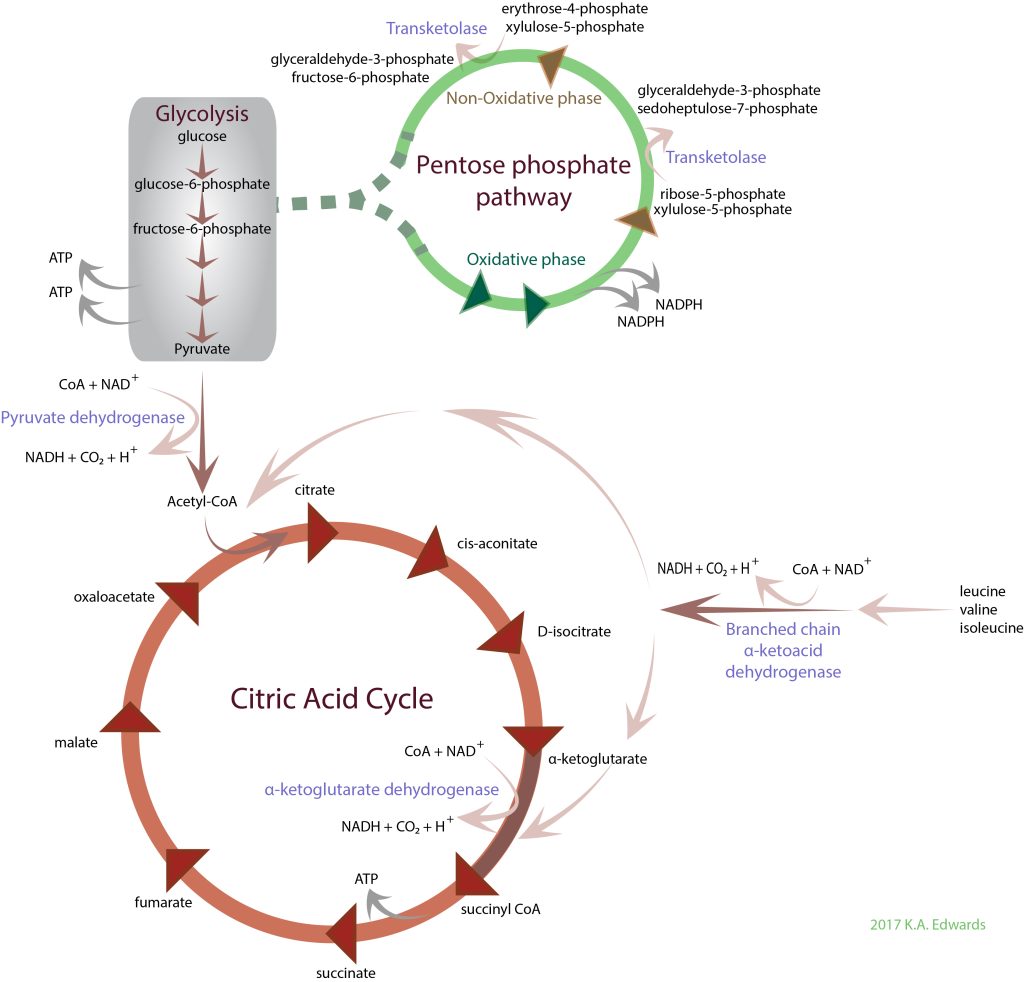
Thiamine is largely present in the bran, yet 3 billion people around the world who consume rice as a staple choose white rice over brown rice. What gives?
Whole grains can be problematic. In addition to phytic acid, which can prevent the absorption of minerals, they contain lectins2. Lectins increase intestinal permeability, which can lead to a host of digestive and auto-immune problems.3
Approximately 30% of our food contains lectins, some of which may be resistant enough to digestion to enter the circulation. Because of their binding properties, lectins can cause nutrient deficiencies, disrupt digestion, and cause severe intestinal damage when consumed in excess by an individual with dysfunctional enzymes. These effects are followed by disruption of intestinal barrier integrity, which is the gateway to various autoimmunities.
Aristo Vojdani, PhD, MSc, CLS
On balance, the rice eating cultures of the world have opted to choose white rice: much lower in thiamine, but also much lower in lectins and phytic acid.
On small farms in China, the rice bran is fed to the pigs. They eat the bran so that you don’t have to!! Pork is the world’s most dense source of thiamine. The pigs recycle the thiamine from the rice bran into a much more easily digested, absorbed and concentrated form.
The traditional diet in China is very high in white rice and not very nutrient dense. Let’s consider the diet of a village from Quingpu county in coastal Southern China. This is the full diet in 1983 as captured by the “Diet, Life-Style and Mortality in China”. Over a pound of white rice, some green vegetables, “light colored vegetables” (onion), seaweed, a small portion of legumes, a bite of fish and 60 grams of pork: about 2 ounces. I made this photographic representation of the daily diet.

Because of the coastal location and proximity to Shanghai, Quingpu had one of the most varied diets of any rural county studied in “Diet, Life-Style and Mortality in China“. The seaweed actually provides magnesium, manganese and vitamin b12, nutrients that are very low in much of the country. But the rice, vegetables and fish simply don’t provide enough thiamine, riboflavin and niacin.
I used my cronometer app to put in the average height and weight of a man from Quinpu and his daily diet reported in the study without the 62 grams of pork.
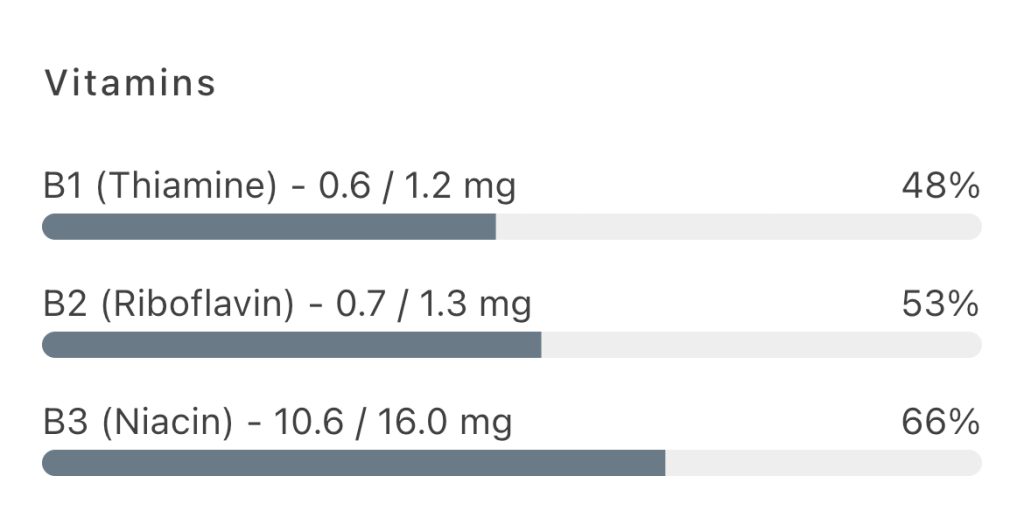
The diet is pretty severely deficient in thiamine, riboflavin and niacin. And how does that look WITH the 62g of pork? Just 2 ounces.

It’s still not ideal, but it’s much better! How does this look instead with 62 of skinless duck breast?
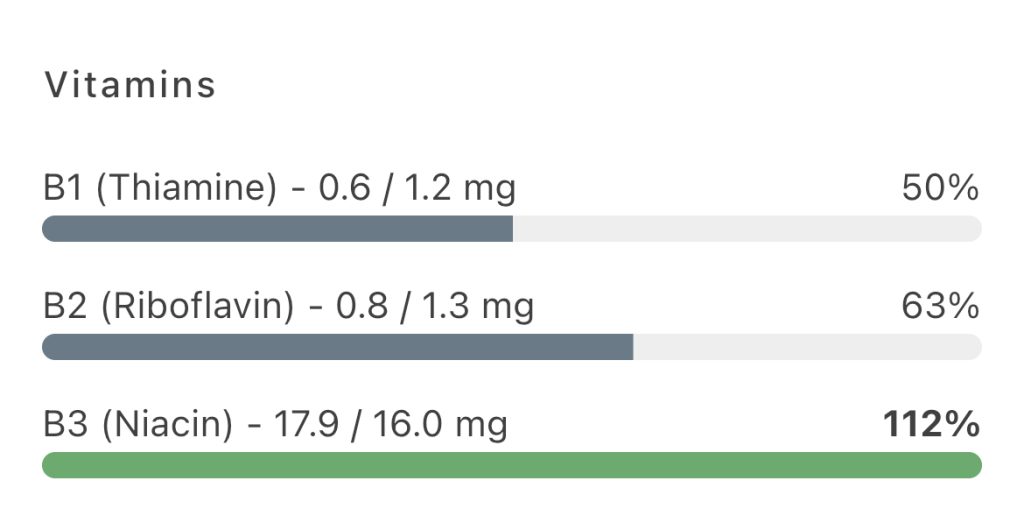
The niacin is great, but still no thiamine. What about replacing the pork with 62g of tofu?

Tofu is really no help.
Riboflavin is the precursor to FAD and therefore crucial for metabolic function, powering complex II and many other crucial enzymes. Niacin is the precursor to NAD. If you don’t have enough thiamine, riboflavin and niacin, you will simply not have an efficient metabolism.
Of all of the foods available to the Chinese farmer, pork is the one that complements the B vitamin deficiencies of a white rice based diet. Pigs can be raised on the rice bran, broken rice kernels and vegetable trim supplemented with ash and and salt. They turn last years rice straw into fertility giving compost.
Is it any wonder the sign for “home” is a house with a pig in it?
Coprophagy, K2 and Metabolic Health
As if that weren’t enough, pigs can also be used to do odd jobs. For instance, pigs love eating poop. All kinds of poop. I’ve kept pigs and cows in the same pasture. It’s hard to describe the glee with which pigs will devour fresh hot cow manure.
Eating poop is known as coprophagy.
That brings us to the latrine pig. Outhouses in China were often constructed so that the business end had an opening to the hog sty. The pigs would keep the human wastes cleaned up and recycle them into pig manure. In this way, human waste could be recycled for use in the rice paddies without the risk of spreading human pathogens. It’s actually pretty clever.

That brings us to vitamin k2. Vitamin k1 is found in green plants and is necessary for blood clotting. Bacteria convert vitamin k1 into vitamin k2. For this reason, vitamin k2 can be found in fermented products like cheese and sauerkraut. Vitamin k2 is also made in our large intestine, but we can’t really absorb it. Unless, you know…. coprophagy happens.
Pigs eat poop so that we don’t have to!! In fact, pigs love of poop makes makes pork the highest known source of vitamin k2 mk-104. (There are a bunch of variants of k2 that are designated by length of the side chain. Mk-10 is a very long k2 variant.)
This is intriguing because it has been shown that vitamin k2 intakes are inversely associated with diabetes risk5. Another study showed that vit k2 supplementation in athletes increased peak cardiac output by 12%6.
Since 2020, a pair of papers by Su have shown that vitamin k2 reverses high-fat diet induced insulin resistance, mitochondrial dysfunction, drop in ATP production and muscle fiber type transition to the obese state.7,8 These improvements rely on sirt1 and sirt3 activation, which is to say that somehow vitamin k2 fights reductive stress, although the mechanism is unclear. Longtime readers of this blog know that I believe reductive stress is the cause of metabolic dysfunction.
Lastly, a 2022 paper shows that vitamin K2 reverses age-related structural and cognitive deterioration in naturally aging rats.9
At this point, the evidence that viatmin k2 is a super vitamin that enhances mitochondrial function is becoming hard to ignore.
And pork is the major source of vitamin k2 in the chinese diet. Because coprophagy.
Where’s the tally?
So a small farm in China raises rice. They keep two pigs. One to eat and one to sell. The pig sold at market represents a major part of their cash income for the year.
The pigs are fed the wastes of polishing the rice and human excrement. They break the cycle of human parasites, allowing human waste to be used as fertilizer. They add their own fertilizer, turning the rice straw into compost.
The pork produced provides the main source of supplemental thiamine to a rice based diet as well as the only source of the super-vitamin k2.
What’s not to like?
Get Some Sustainable, High K2 & Thiamine, Low-PUFA Pork!
I am the founder of Firebrand Meats. Firebrand Meats is dedicated to providing healthier, more sustainable pork. I coined the term “low-PUFA pork” and my pork is the only pork I’ve seen that is tested for its polyunsaturated fat content. Polyunsaturated fat (PUFA) creates reductive stress and obesity. In the latest test, Firebrand Meats pork had 6% linoleic acid as opposed to 16% in Smithfield pork.
We use waste products from the food processing industry (pea flour left from making pea protein isolate) to create a sustainable low-PUFA diet for our berkshire pigs. Berkshire pork is what makes the famed kurobuta or “black pork” of Japan. The pork is also high in thiamine and vitamin K2.
This is the finest and best for you pork in the world.
I have just begun offering a larger, 30 pound freezer filler box that will begin shipping when the next batch comes in in early September. If you are one of the first 50 customers you can get 30 bucks off by using the promo code “THIRTY” at checkout. Pork ships to the lower 48 states.
A Sustainable Herd
Traditionally, the vast majority of pork in China was produced by small, backyard producers. These types of producers only use about 20% of purchased grain to feed the pigs. 80% of the hog’s diet is waste products. Even though China consumes a massive amount of pork, and even though the large scale commercial hog industry is being rapidly scaled up, as late as 2015, this type of backyard pork still represented 57% of the pork produced in China, which has by far the world’s largest pork consumption.

Changing Times
The pork industry in China is rapidly scaling up. The large industrial consolidators, backed by the government, are squeezing prices and forcing out the little guy. These new farms are less sustainable – instead of 20% of the hog feed coming from purchased grain and 80% from waste products, the ratio is larger operations is 65%/35%. The loss of income is presumably also a real hardship for small backyard operations.
What is amazing in all of this is that pork production in China surpassed the combined production of the US and Europe by the year 2000. At that point the easy majority of pork raised in China was still backyard pork. The Chinese industry could have been a model for how to feed the masses healthy pork sustainably. Instead, China blew it all up.
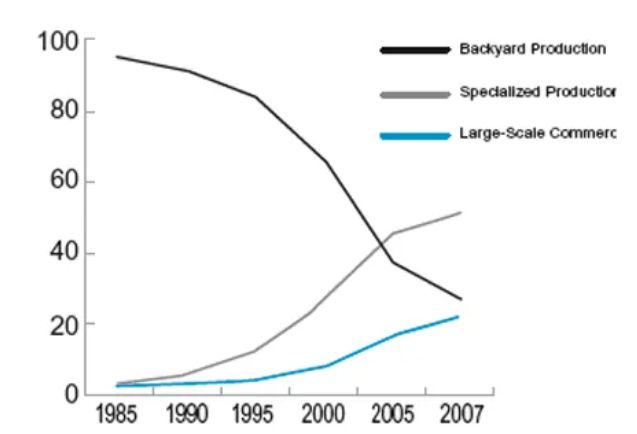
Of course they were only following the American example:
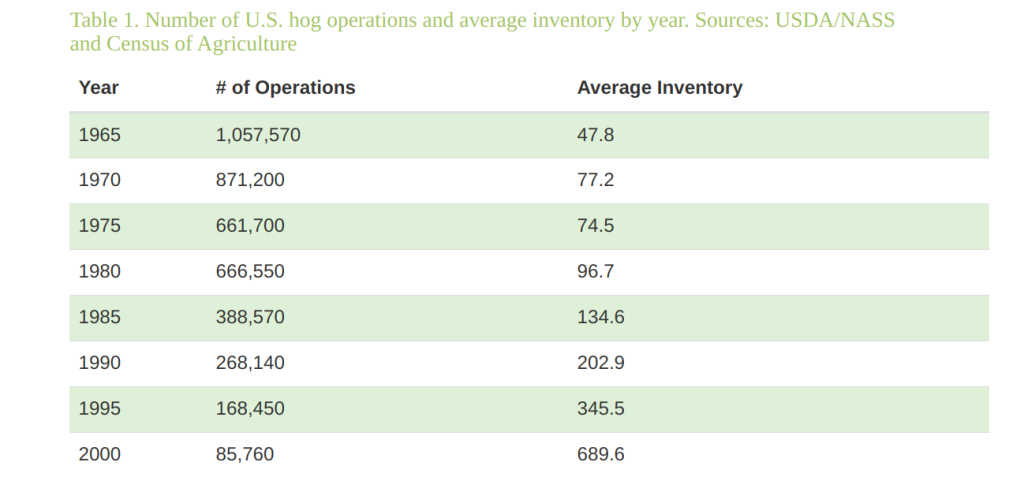
Don’t Eat Meat?
I think that the vegan argument, which I’ll summarize as, “Eating meat is bad because it is resource intensive and inhumane” is an easier sell in a post-agricultural society. People who have grown up on farms and understand the connections between livestock and crop agriculture. People who understand the importance of farm grown meat in the diet. When you tell that person that meat is bad, there is a real disconnect. Of course meat isn’t bad.
In China in 1991, 60% of people were employed in agriculture.
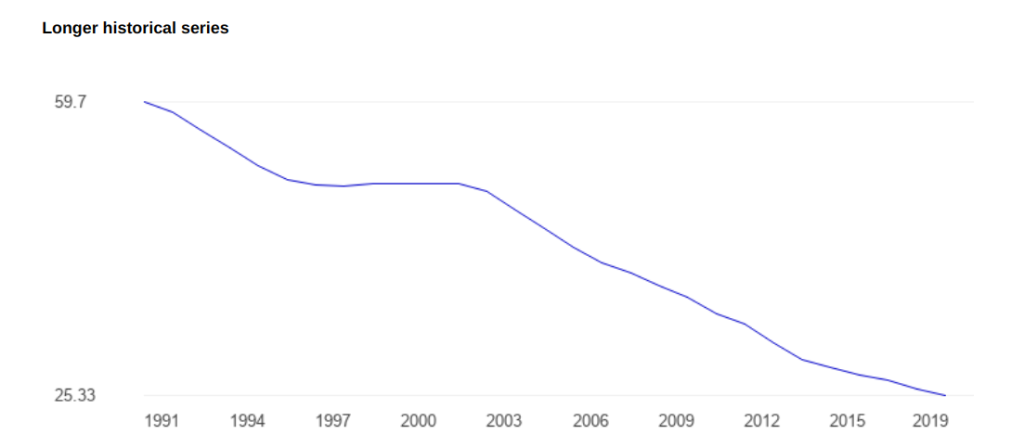
In the US, 60% of people were employed in agriculture as recently as 1850.

China is still an agricultural society. Those societal memories are very real. The increase in pork consumption in China is not going to stop anytime soon. At this point, the US already exports half of its soybean crop and 20% of its hogs and corn. Every hog not eaten in the US is one more that can be shipped to China. That’s reality.
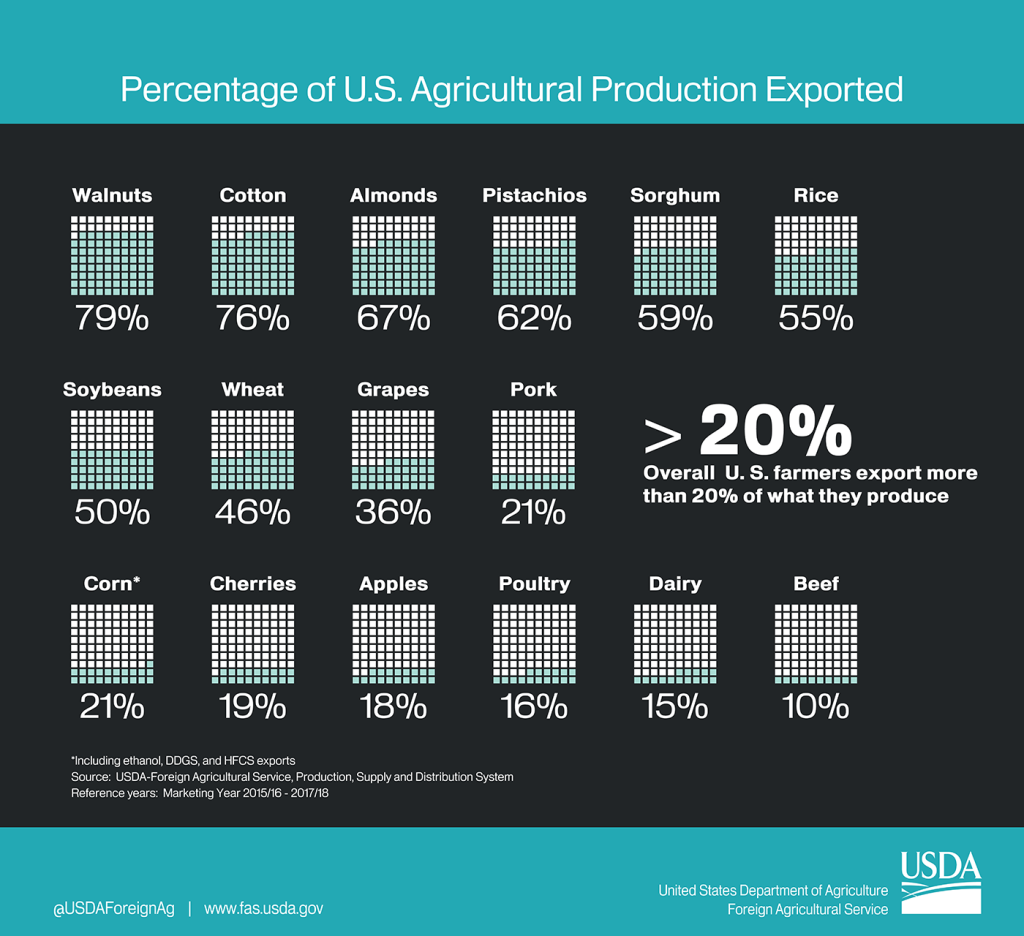
To be clear! I think industrially raised meat IS bad. I think it’s very bad. I yearn for a return to sustainable local meat production. I’ve also done it a long time and I can tell you it’s very hard. Very, very hard. I’ve got some ideas, though. Check back in.
- 1.Mailloux RJ, Gardiner D, O’Brien M. 2-Oxoglutarate dehydrogenase is a more significant source of O2·−/H2O2 than pyruvate dehydrogenase in cardiac and liver tissue. Free Radical Biology and Medicine. Published online August 2016:501-512. doi:10.1016/j.freeradbiomed.2016.06.014
- 2.Nakata H, Lin C, Abolhassani M, et al. Isolation of Rice Bran Lectins and Characterization of Their Unique Behavior in Caco-2 Cells. IJMS. Published online May 13, 2017:1052. doi:10.3390/ijms18051052
- 3.Vojdani A. Lectins, agglutinins, and their roles in autoimmune reactivities. Altern Ther Health Med. 2015;21 Suppl 1:46-51. https://www.ncbi.nlm.nih.gov/pubmed/25599185
- 4.Fu X, Shen X, Finnan EG, Haytowitz DB, Booth SL. Measurement of Multiple Vitamin K Forms in Processed and Fresh-Cut Pork Products in the U.S. Food Supply. J Agric Food Chem. Published online May 24, 2016:4531-4535. doi:10.1021/acs.jafc.6b00938
- 5.Beulens JWJ, van der A DL, Grobbee DE, Sluijs I, Spijkerman AMW, van der Schouw YT. Dietary Phylloquinone and Menaquinones Intakes and Risk of Type 2 Diabetes. Diabetes Care. Published online April 27, 2010:1699-1705. doi:10.2337/dc09-2302
- 6.McFarlin B, Henning A, Venable A. Oral Consumption of Vitamin K2 for 8 Weeks Associated With Increased Maximal Cardiac Output During Exercise. Altern Ther Health Med. 2017;23(4):26-32. https://www.ncbi.nlm.nih.gov/pubmed/28646812
- 7.Su X, Zhou J, Wang W, Yin C, Wang F. VK2 regulates slow-twitch muscle fibers expression and mitochondrial function via SIRT1/SIRT3 signaling. Nutrition. Published online January 2022:111412. doi:10.1016/j.nut.2021.111412
- 8.Su X, Wang W, Fang C, et al. Vitamin K2 Alleviates Insulin Resistance in Skeletal Muscle by Improving Mitochondrial FunctionViaSIRT1 Signaling. Antioxidants & Redox Signaling. Published online January 10, 2021:99-117. doi:10.1089/ars.2019.7908
- 9.Elkattawy HA, Ghoneim FM, Eladl MA, et al. Vitamin K2 (Menaquinone-7) Reverses Age-Related Structural and Cognitive Deterioration in Naturally Aging Rats. Antioxidants. Published online March 8, 2022:514. doi:10.3390/antiox11030514

I’ve also seen arguments that a lot of land isn’t sufficiently fertile to be used for agriculture, and isn’t close enough to anywhere useful to be residential, and is ideal for grazing. We don’t even have enough water to turn all US acreage (that isn’t cities) into soybean farms. Banning cows won’t mean “more food,” it’ll just mean more unused land. And studies on desertification suggest that less livestock means more desert.
What about buying conventional but very lean pork (aka no visible fat).
Would this be okay from a PUFA perspective?
And what about the vitamins like thiamin and K2?
Especially the K2.. is it also in the lean parts?
Is it in the conventional pork at all since i imagine they dont eat poop!?
K2 is a fat soluble vitamin, which (unfortunately) means you won’t be likely to get any from lean pork.
Thiamine on the other hand is very likely to be in the muscle meat of conventionally raised pork. Possibly at lower levels than that of properly raised/properly fed pigs, but still much more than you would get from beef or chicken.
Not an expert, just a person trying to understand all of the available info, and share the stuff i think i understand.
If i missed the mark, I’m sure someone will correct me.